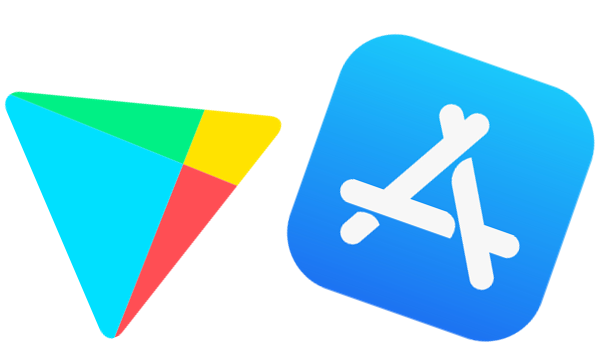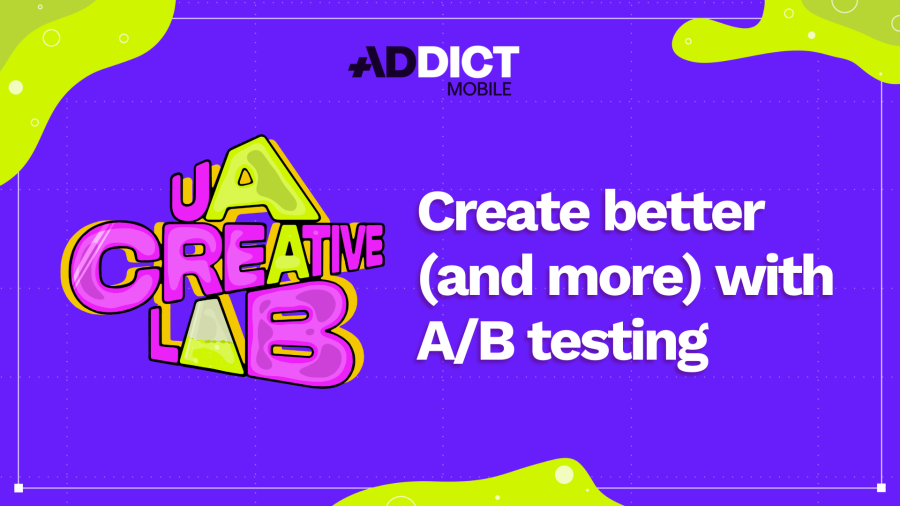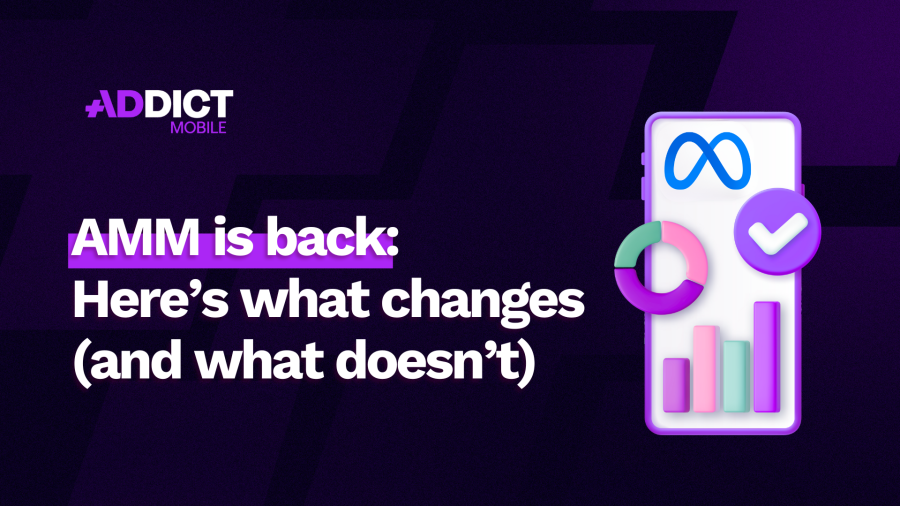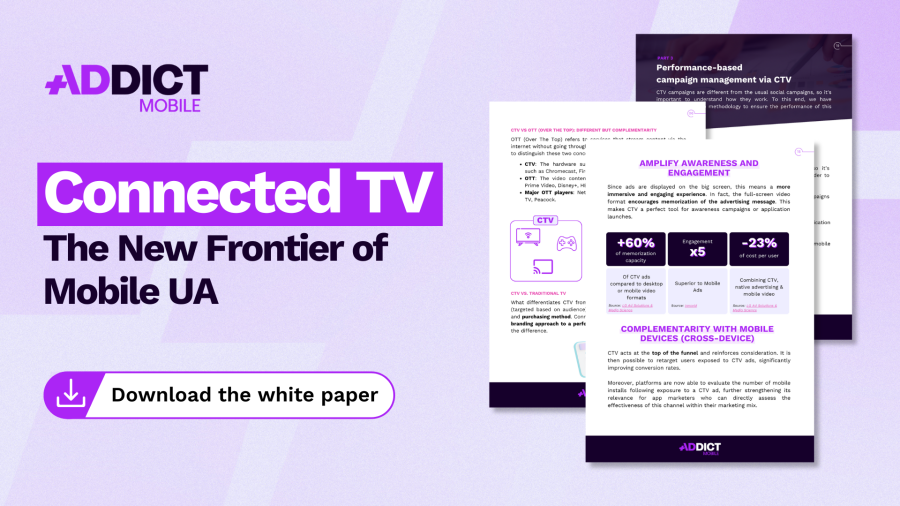App Store Optimization (ASO): do not ignore the importance of your app store pages

194 billion. This is the number of applications downloaded in 2018 worldwide on Apple and Google stores. A figure that makes you almost dizzy and shows how crucial it has become for any publisher to gain visibility so that their application can be downloaded and used. A question then arises: how to rise in the rankings while maximizing your conversion rate (page view > installation)?
ASO: definition & challenges
App Store Optimization (otherwise known as ASO) consists in optimizing its application presentation pages for Apple and Google stores. The objective is simple: to make them more visible in search results while maximizing conversion rates.
Like web search engines, stores use an algorithm to rank different applications in search results. It is therefore important to pay attention to the use of keywords to optimize your ASO and thus improve your positioning in search results.
The second objective of ASO is to maximize conversion rates, that is to say the “arrival on the application page > installation”. How? By seducing users with nice visuals, but also with application name and description. Hence, the use of icons, screenshots and videos is your best asset. You must convince your end user to install your application or game.
As an expert in mobile user-acquisition, ADDICT MOBILE knows how important the page store is in a mobile marketing strategy. Indeed, nothing is more frustrating than paying to acquire new users who arrive on a poorly optimized page store. This has a negative impact on campaign performance.
The challenge is therefore twofold: you need to gain visibility within iOS and Android application stores – and acquire new users naturally via the requests you make –, but also reduce your acquisition costs by improving your conversion rate (click on ad > application install).

What are the criteria that impact the app ranking in stores?
Just like Coca-Cola’s recipe, that of Apple and Google,s algorithms remains secret. However, we are able to present some factors that strongly impact the app position within the research results. Please note, however, that the importance of these elements varies from one store to another.
Key words
Several text fields are used by the algorithm to position applications in search results. The words inserted in these fields will be taken into account as keywords by the algorithm.- Keywords lits on iOS: With Apple you can insert a list of keywords (limited to 100 characters) in order to stand out more strongly on these words. This is the most important field for the iOS algorithm.
- Title (subtitle for iOS): It is in this section that keywords will count the most for Android (for iOS, it is the second most important field). It must therefore be attractive and explicit about the content of the application to have a positive impact on its ranking with the right keywords.
- Description (short or long): Your description keywords will only be taken into account on Android; Apple’s algorithm does not take this field into account.

A thorough analysis of the application’s keywords and the application’s positioning according to these words is therefore necessary to determine the strategy to adopt. Addict Mobile has specific tools to analyze the relevance of keywords and their competition – just like what happens on the Web. It is in fact important not only to measure out their use properly, but it is also necessary to regularly repeat your analysis. These steps ensure a good follow-up in order to keep track on the most important keywords of your activity and thus avoid going down in the ranking.
Number of downloads
Probably the most important factor for these two stores, although it can be strongly questioned depending on the rating and application use. Indeed, the more installations your application generates per day, the more it will be prioritized by algorithms. Even more so on iOS, which takes this data more into account. This is why applications such as Facebook or Twitter, which are internationally renowned, trust the store rankings.
Application use
Both stores take into account the application use which is mainly reflected in: the rate of uninstallations, retention (number of openings) and the purchase number/amount. Google and Apple have a real financial interest in promoting apps that generate the most transactions since both stores take a 30% commission on the generated in-app purchase revenue – 20% for subscriptions that are over a year old.
Ranking and review number
A score below 4 is considered “bad” for the ranking. Rating reduces, or amplifies, the impact of download number. In this regard, Google recently reported that from August 2019 onwards, the last scores will be taken into account more than the overall ranking average. The “freshness” and the number of marks will therefore gain more and more importance.
Maximise conversion rates: the impacting criteria
We know that mobile user acquisition costs tend to increase due to increasing competition, so it is crucial to have an optimized download page. You will therefore be able to reduce the cost of your acquisition campaigns. Indeed, media buying on many sources – Facebook, Google and others – is done on the CPM or CPC. Thus, thanks to a better click>installation conversion, your costs per installation will naturally decrease. Also, a good conversion at the install from application stores will allow you to be favored by the algorithm.
It is important to consider a number of things to help mobile users in their decision-making process when they are on your page: your icon, screenshots, videos, title, subtitles, scores and comments.
Icon
Do not neglect your icon. It allows your application to be immediately identified. If your application is still unknown, be as explicit as possible. An icon that is too conceptual may not be sufficiently evocative.
Your icon must be eye-catching and at the same time locate the application in its environment. If so, mobile users will be willing to take a closer look at it and click on it to finally land on your page.
Screenshots and videos
Screenshots and videos are now highlighted in the results list. Indeed, on iOS it is possible to display a video in autoplay (without sound) and/or screenshots within the search results – unlike Android. These elements play an important role in attracting the user to your page.
The landscape feature offers you a bigger surface to express yourself which is interesting given the different sizes of phone screens in the market. However, it is only relevant if your application is suitable for a video demonstration.
Vertical screenshots are better suited to simulate the application in a phone or to add texts explaining the main features.
Generally speaking, it is undoubtedly these elements that will be seen the most on your page. Not only because of their location, but also because users are naturally more inclined to look at visuals rather than read texts.

Title and subtitles
The title and subtitles (only for iOS) allow the user to fully understand your value proposition and your application offer.
- Description (short or long): It is the longest text element on your page. This is where you must detail your features and highlight the advantages offered by your application.
- Promotional text: It is not necessary to resubmit the application to update this field. It is particularly useful for A/B testing different texts and highlighting an event, discounts, etc. Keywords are not taken into account by the algorithm here.
Do not publish false content or oversell your application – both in the description and in the screenshots – to gain more downloads. Such a practice would only have a negative effect on the user, who would then give you a bad score.
Rankings and comments
The impact of your scores and comments is very important on the success of your application. So do not overlook it. You know it well: they have the power to scare off mobile phone users if they are bad. It is therefore recommended to listen to them, answer their questions and improve your application according to their feedback.
- Ranking: You have the choice with iOS to reset your marks when making an update if you consider your overall score is too low. This can prevent you from displaying a bad rating on your page. However, use this feature sparingly because of the importance of the scores (number and average score) in the ranking. This assessment will give greater importance to the application’s most recent ratings, unlike the current “Lifetime rating”. Thus, post-release notes will count more than pre-release notes.
- Comments: Get into the habit of responding to all comments on your page, especially when they are negative. In some cases, you can even ask users to go over their rating again: for instance, if they have given you a rating of 4/5 due to a missing feature that you have just added. Do your best, because a poor score will discourage other users from installing your application.
- Developers (advertisers) can now choose from 3 self-generated Google suggestions to respond to user comments. It is currently only available in English – other languages should be available soon. The idea is to bring more equity between old and new apps and to encourage developers to react quickly to users’ comments.

Conclusion
As with any optimization process, it is not enough to meet the prerequisites (number of characters or screenshots) in order to get good results. The rules of the stores often evolve according to updates done by operating systems. It is therefore important to remain up to date and to A/B test your application regularly. For this reason, Google has been allowing you, since March, to create up to 5 “store listings” in the Play Store. It allows you to display general or personalized elements information according to the users’ location (e.g. Netflix could use this feature to highlight certain programs according to the countries where users are connected). Google also runs tests with applications that are part of the “Early Access” program, to display different elements of app store pages to users based on whether or not they have already installed the app.
If you are considering investing in App Store Optimization (ASO), we can only recommend you to collaborate with an expert on that matter. It is a sure thing, no one knows the specificities of your application better than you do, but in terms of marketing and graphics, nothing beats the contribution of experts with specific tools like Addict Mobile. Such collaboration often makes the difference if you run parallel marketing acquisition campaigns.
NEWS
Article in relation

Interview with Elisa Lopez, UA Team Leader
Meet Elisa, UA Team Leader at Addict Mobile. Since 2020, she’s been supporting her clients with both App and Web strategies, always with...
Published on 2 July 2025
UA Creative Lab #2: Create better (and more)…
Mais produire plus ne suffit pas : encore faut-il savoir quoi produire, pourquoi, et comment itérer efficacement en s’appuyant sur des insights concrets....
Published on 25 June 2025
Meta reactivates Advanced Mobile Measurement: what does it…
On June 17, 2025, Meta announced the reactivation of its Advanced Mobile Measurement (AMM) program, once again giving advertisers access to device-level (non-aggregated)...
Published on 24 June 2025


